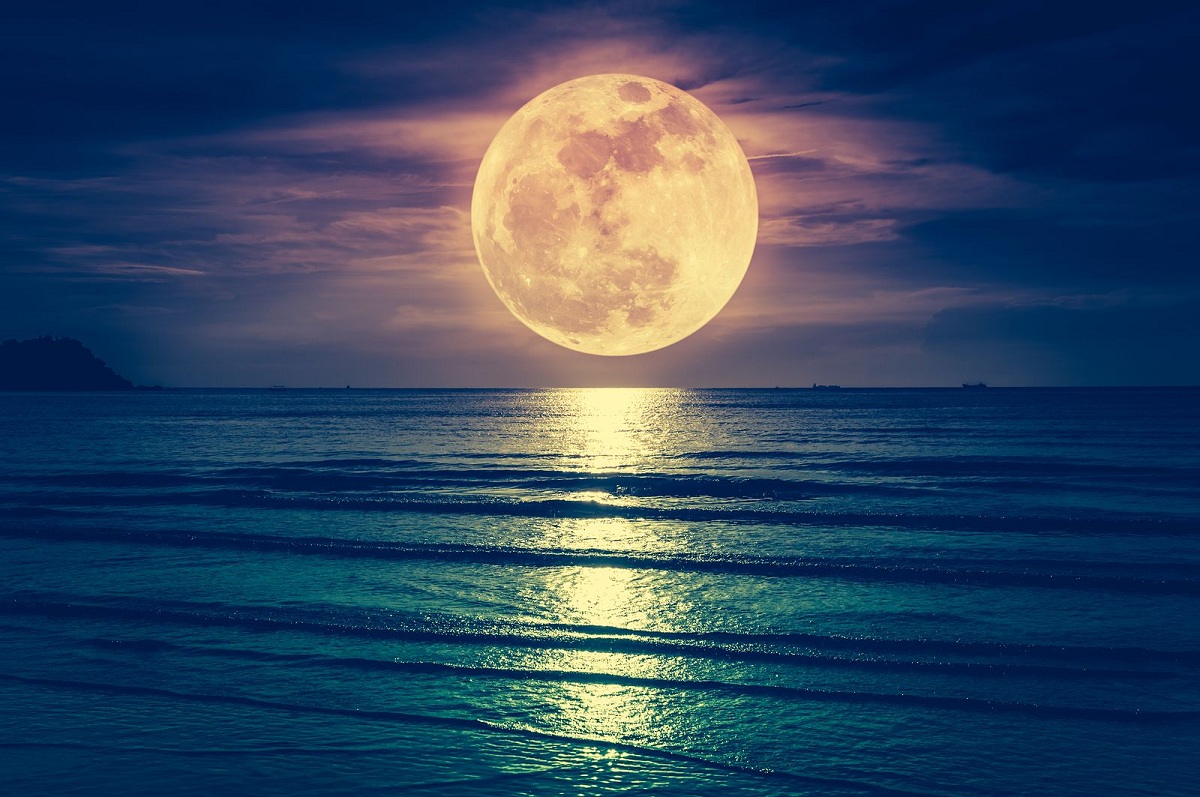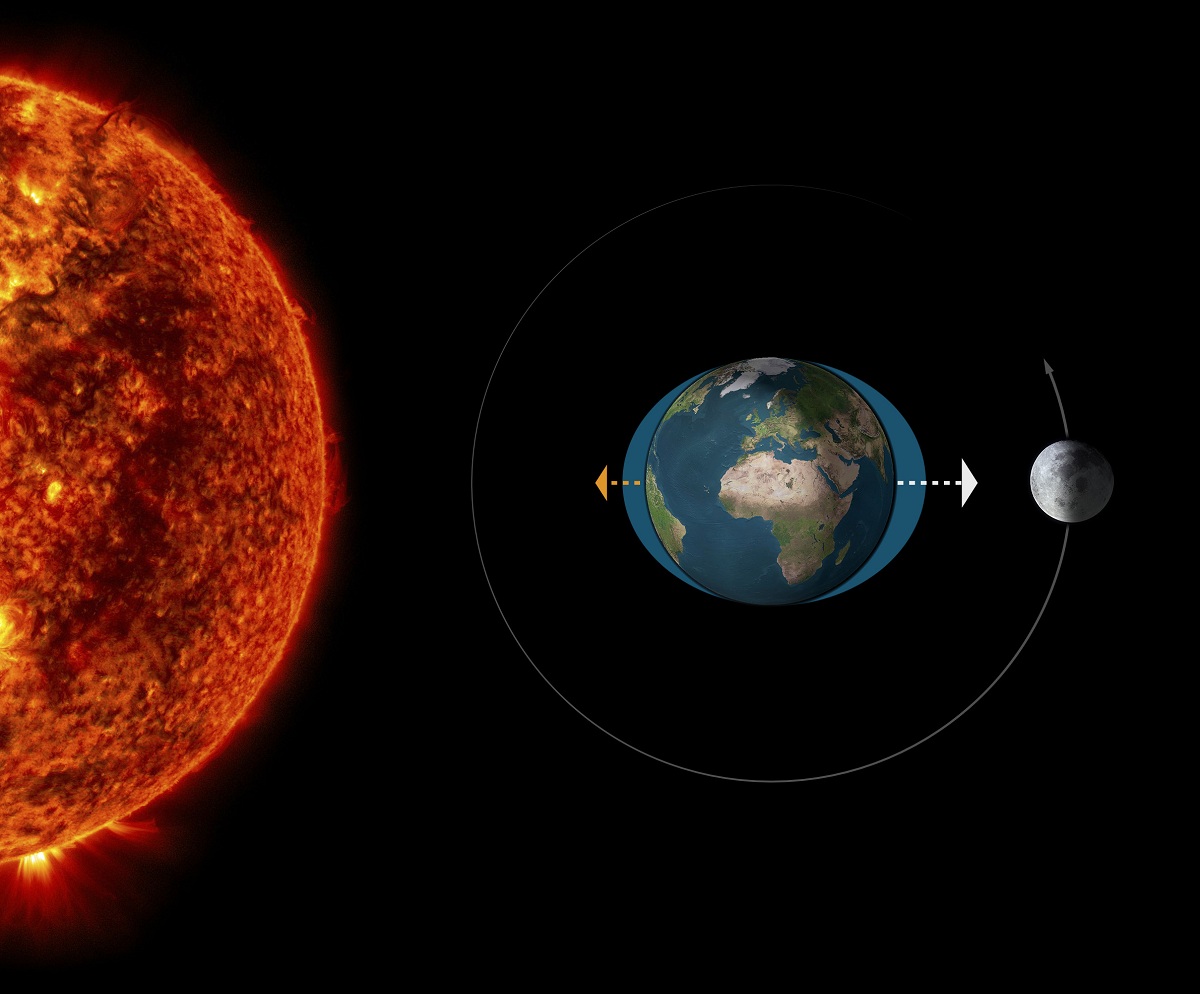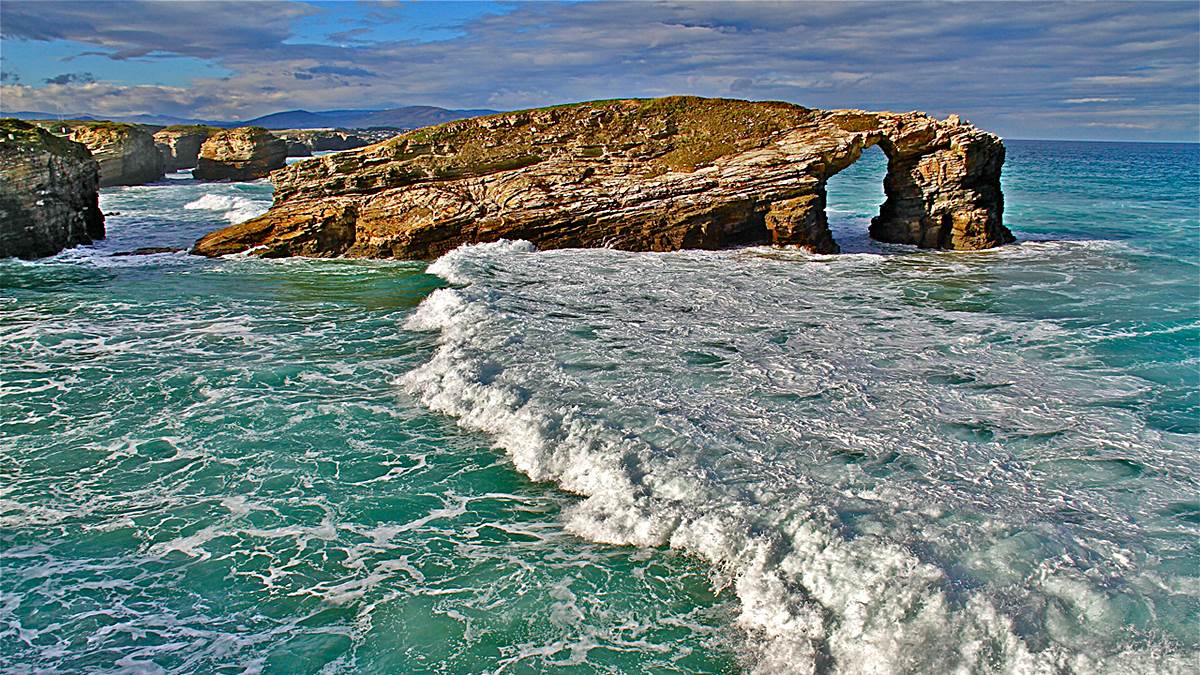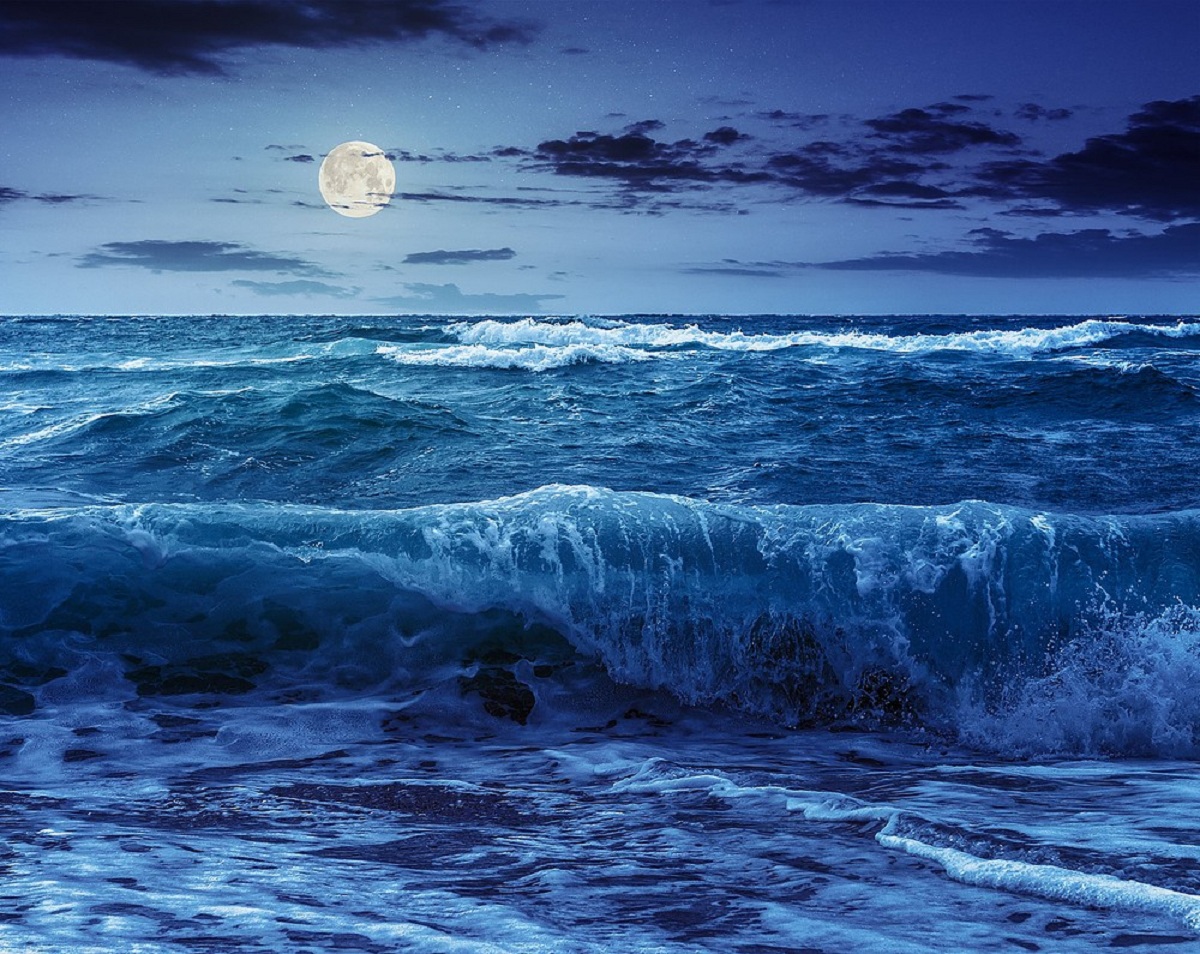
The tides play a fundamental role in the dynamics of the coasts. It is a phenomenon that acts periodically and is capable of moving large masses of water both in and out of the coast. Since the origin of the tides can be somewhat complicated, we are going to elaborate a explanation of the tides for children.
Therefore, in this article we are going to tell you the explanation of the tides for children and how this phenomenon originates.
The explanation of the tides for children

The action of the sun and the moon's gravity generates movements in the water masses that intervene on the coast. The moon is the satellite that exerts the most force on the tides and is combined by the attraction of the sun. The action of gravity depends on the size of the celestial body in question. In this case, the sun exerts a greater action of gravity but it is also at a greater distance from our planet. This is the reason why moon is the satellite that exerts the most force on the terrestrial water masses.
We are now going to explain the tides for children and how they work. We must add the movement of the earth to the forces exerted by the moon and the earth in combination. The earth exerts movement of rotation and translation continuously. The movement of rotation does so on itself, while the translation is around the sun. The rotational motion exerts a force known as the centrifugal force. Many of the forces that act to produce the tidal phenomenon do so simultaneously. It is the moon that exerts the greatest action.
The tides work in a cyclical way since our planet takes a day to make a complete revolution on itself. This makes them completely aligned with the moon. Therefore, we should think that there is only one high tide throughout the day. However, this is not so. There are two high tides or high tides in 12 hour cycles, while there are also two other low tides or low tides.
Why tidal cycles occur

In the explanation of the tides for children we must mention some places that occur simultaneously on our planet. The earth and the moon form a system that rotates around a center of rotation. It is the moon that attracts the waters when it was in a vertical position and, therefore, the waters rise. This is when we have high tide. On the other side of the earth, the same thing will happen thanks to the centrifugal force generated by the earth's rotational movement. It must be taken into account that this high tide has a lower intensity given the distance it is from the moon.
Since not all the faces of the earth are aligned with the moon, in which they are not, the opposite occurs. The gravitational and centrifugal forces counteract each other and result in low tide. In places where there is low tide, the sea level on the coasts is much lower. On the contrary, in high tide areas the sea level is much higher. This can be seen with the naked eye since there are areas where they are more noticeable than in others. You can see how throughout the day the beach occupies more or less territory depending on the waves and the amount of water.
One of the dangers that high tides can generate is when they are mixed with a storm.
Tides explained for kids: cycles

In order to make a correct explanation of the tides for children, we have to think about the movement of our planet in order to understand the entire cycle correctly. We must bear in mind that our planet rotates on its own axis of rotation. The moon revolves around the earth in translation and takes about 29 days to complete its orbit. This means that our planet is not exactly aligned with the moon every 24 hours. Take more than that. This fact is called the lunar day and it is what marks the tidal cycle.
It is the reason why the complete cycle of high tide and high tide is 12 hours. The cycle between high tide and low tide is only 6 hours, although it is not always so exact. We know that our planet is not only made up of water and the uneven land surface also influences the tides. Another aspect to take into account is the geometry of the coasts, the depth profile in the coastal areas, the marine currents, the wind and the latitude in which we are. At times it is also influenced by atmospheric pressure.
Spring tides and storm surges
As we have spoken, it is the attraction of the moon that exerts the greatest force on the waters. But there are several types of tides. On the one hand, we have the spring tides. It's about a the steepest type of high and low tide that occurs when the moon and sun are aligned on Earth. It is then when both forces pull the waters with greater amplitude and more pronounced high and low tides are formed.
The reverse is also true. When the Sun and the moon are at a right angle, the attractive forces are smaller, so the action of gravity is minimal. It is at these times when the tides are smaller and are called neap tides. If some of the variables that affect the tides mentioned above are of great value, storm surges can form.
Compared with other seas and oceans, the high tide and low tide are hardly appreciated in the Mediterranean Sea. This is because it is a practically closed sea. There is only himhe opening of the Strait of Gibraltar through which there is an exchange of water masses with the Atlantic Ocean.
I hope that with this information the explanation of the tides for children has become clear.